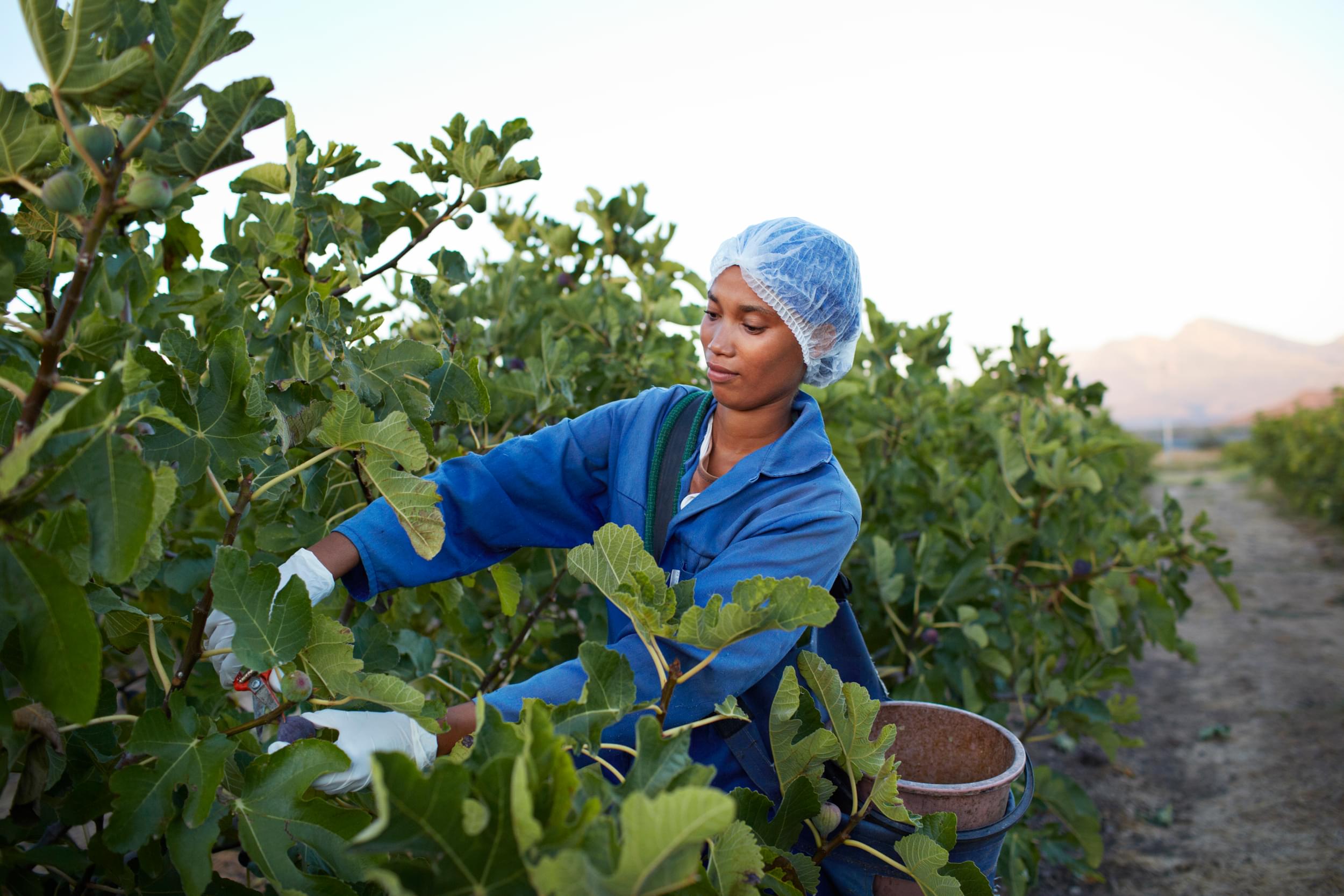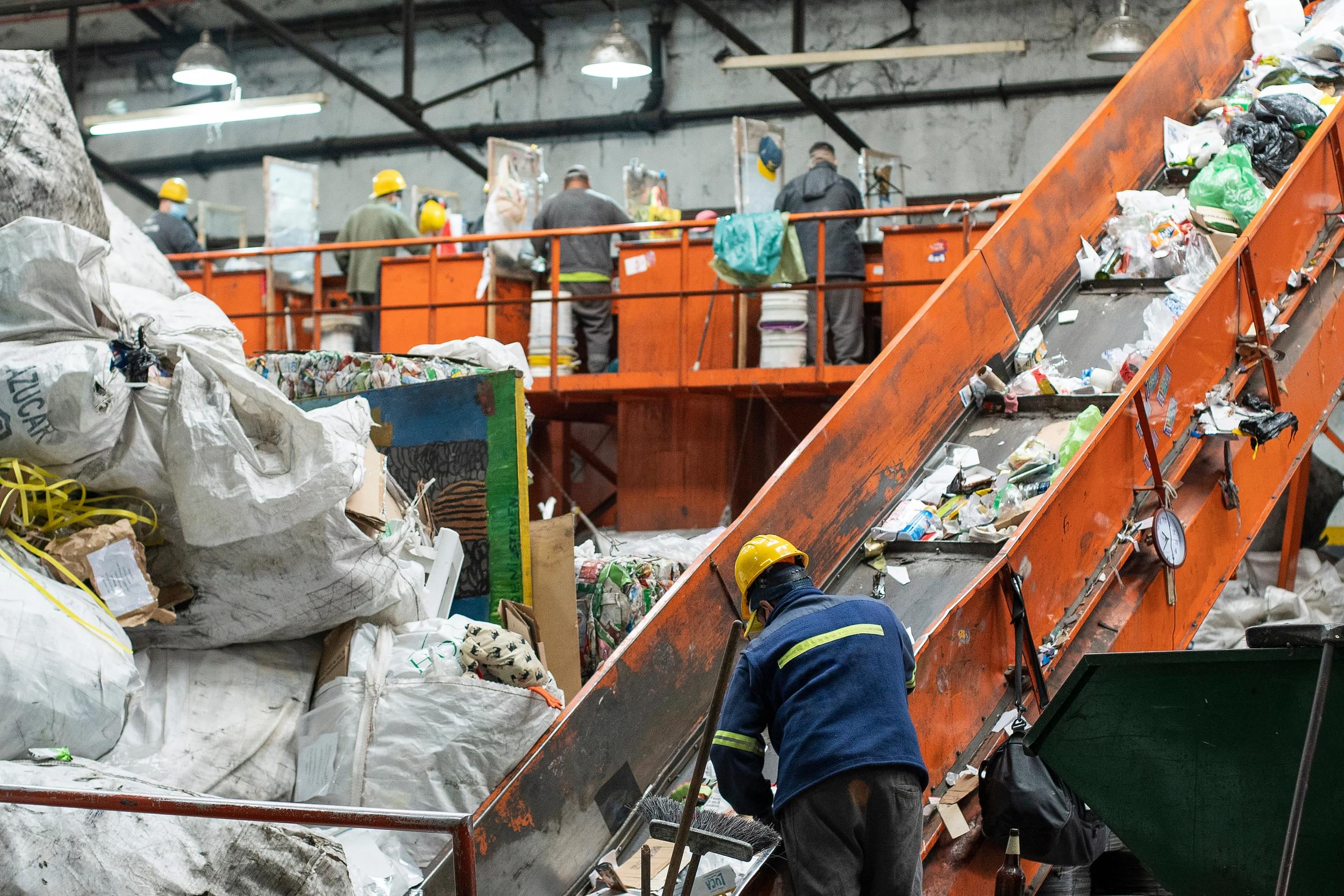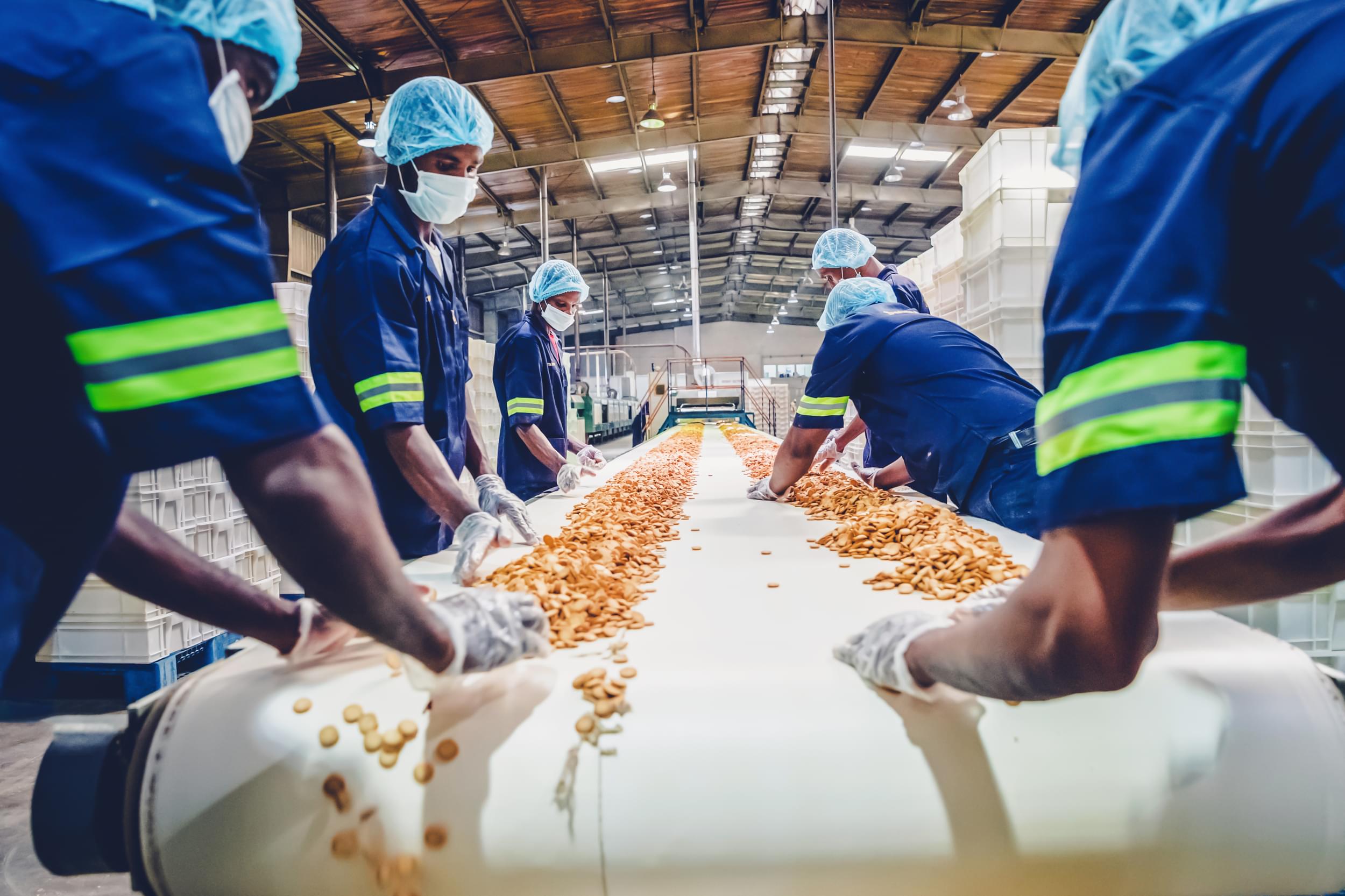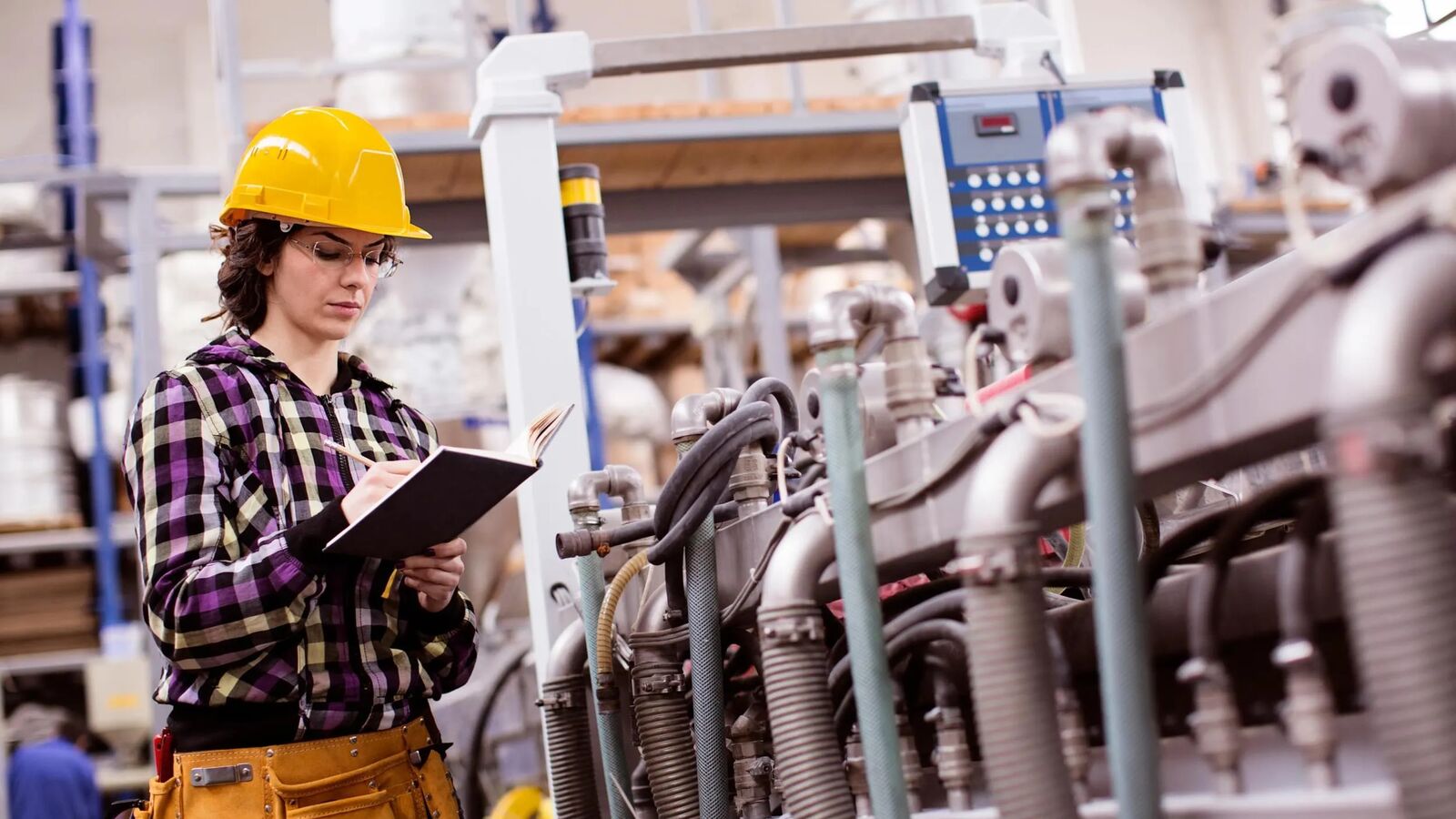Redefined employment models and patterns
In a traditional relationship, the employer provides job security, holidays, benefits and a defined work schedule in exchange for the employee’s commitment to the company, and adherence to terms, conditions and values.
However, this relationship is altering due to an increase in short-term contracts, freelance work, self-employed roles, gig work and platform-based working models. Other developments include a substantial growth in small and medium-sized enterprises (SMEs) and the normalisation of flexible and remote working in many sectors post-COVID-19.
These shifts impact the availability of and access to labour and social protections, the responsibility employers have towards workers, and the ability for employers to manage or intervene in worker health, safety and wellbeing matters.

The rise of the gig economy and platform-based work
The gig economy refers to a labour market characterised by short-term contracts and freelance jobs or ‘gigs’. In the USA, over 10% of workers rely on gig work for their primary income.4 These jobs can range from delivery work to freelance tasks on a specific project. They are often easy to access via digital platforms and suit the flexible contemporary lifestyles of many. However, they often come without the social protection and provisions that traditional employment offers, such as private healthcare or paid sick leave.
Decades-old primary OSH legislation is based on a traditional employment model and struggles to adequately address the OSH issues of gig work. Given the lack of traditional workplace access, it is also more difficult to engage with gig workers regarding OSH issues.
To address this issue, remote monitoring in platform-based work is growing. For example, Uber uses a fatigue monitoring system with its drivers. However, the presence of monitoring, surveillance and algorithmic management presents its own threats to worker wellbeing, data privacy, working conditions and worker autonomy.
Specific demographic groups, such as young people or migrants, are more likely to rely on gig work. A recent study found that over 70% of workers in the app-based delivery sector in Argentina and Chile are migrant workers.5 This creates structural inequalities, resulting in certain demographic groups with fewer social protections and less regulated, managed or potentially unsafe working conditions.
Growth in small and medium-sized enterprises (SMEs) and informal economies
There has been substantial growth in the number of SMEs globally, increasing from 204 million to 333 million between 2000 and 2021.6 SME’s play a major role in most economies and are currently estimated to represent 50% of total employment.7
They are particularly important in emerging economies, with formal SMEs contributing up to 40% of national income (GDP).8 However, these numbers are significantly higher when informal SMEs are taken into account.9
The informal economy includes all activity that would have market value and tax revenue but is undeclared. These activities play a key economic role, particularly in developing countries, where informal arrangements are common in small businesses, construction, agriculture, social care and childcare. It is particularly common to see a movement towards informal economy employment in rapidly urbanising countries as people move from agriculture to informal jobs in cities.
Those working in the informal economy are likely to be more exposed to health and safety risks, such as outdoor work in extreme heat or humidity. There is also less education and knowledge about OSH risks to support how they are managed.
SMEs may have less ability or provision to employ OSH professionals in their organisations. Therefore, SME’s may struggle to keep pace with new and changing OSH risks and opportunities, such as those driven by the application of emerging technologies.
In many developing markets, workers employed in formal and particularly informal SMEs will experience lower levels of regulation, enforcement and oversight into working conditions at a government or policy level.
As a result, positive changes in OSH in SMEs, particularly in emerging economies, could significantly improve health, safety and wellbeing at work on a broad scale, while contributing towards economic development.

The prevalence of flexible and remote working
The COVID-19 pandemic, alongside digital transformation, radically altered working patterns and environments. There is a persistent rise in the rate of flexible working (employees establishing working arrangements responsive to their individual needs, often within boundaries or established expectations), hybrid working (typically involving employees sharing time between an office environment and a remote environment) and remote working (employees completing all work from a location other than an office).
In a 2023 UK survey, 60% of respondents said they had flexible working arrangements in their current role, rising from 51% in 2022.11 Working arrangements can vary depending on the role and organisation and can be both formal and informal agreements, such as a specified number of days per week to work from home, an unspoken agreement that employees can choose the hours that work for them, or job sharing agreements.
However, not all sectors allow for the possibility of flexible and remote work, which may create perceived inequity between ‘front-line’ workers and those who can work remotely.
Flexible and remote working is giving rise to new and increasing health, safety and wellbeing risks and challenges. The lack of social interaction and the increased use of Information Communication Technology (ICT) associated with remote working increases psychosocial and ergonomic risks.12 In one survey, 23% of workers reported loneliness as a drawback of remote working.13
The management of workplace health, safety and wellbeing arrangements becomes more challenging with the rise in remote working. For example, it becomes more difficult to develop a strong, unified safety culture with a set of shared values.
Understanding where the workplace – and the professional’s role – begins and ends is a key issue. From indoor and outdoor physical locations to virtual platforms, there is an increasing number of spaces that make up what we can consider to be the ‘workplace’.
Therefore, some workers spend increasing amounts of time in spaces that are not managed or monitored by their employers, resulting in less oversight over health, safety and wellbeing matters.
Socially responsible, ethical and sustainable business
A broad range of organisations and governments are seeking to reduce their climate and environmental impact. Net Zero targets, the energy transition and the circular economy are influencing the jobs, skills, processes and industries that will exist in the future. At the same time, societal understanding and awareness of inequity are driving a more diverse and inclusive world of work.
This includes removing structural inequity, in which specific groups are disproportionately impacted by health and safety risks, or decisions that are made with one specific demographic in mind.
For example, a 2022 survey of global experiences found that foreign-born women have a greater experience of violence and harassment in the workplace than their native-born counterparts (30.2% vs 21.5%), an effect that was not seen for men.14
Greater consideration of social responsibility and ethics
Consumers increasingly expect social responsibility and ethical behaviours from companies they patronise. A survey across 60 countries found that 55% of online consumers consider a company’s environmental and social commitment when deciding where to shop.15 The legal environment is starting to align with these more socially responsible attitudes.
For example, 200 global garment brands and trade unions have signed up to the legally binding International Accord, aiming to ensure safe workplaces in the garment and textile industry. Investors are also increasingly driving businesses to consider their performance on ESG (Environmental, Social and Governance) measures.
In response to changing consumer and worker attitudes, an increasingly stringent regulatory environment and investor expectations, businesses will likely be held more accountable for their levels of ethical practice.
OSH is becoming more entwined with ethical considerations, with workers making social judgements on the policies and behaviours of organisations. OSH policies are becoming more visible to current, past and future workers on platforms such as Glassdoor, making it easy to view and compare factors such as working conditions and working hours.
Organisations are therefore more widely recognising the importance of being ethical and values-driven on business performance, including worker recruitment and retention.
Removing structural inequalities
Studies indicate that specific demographics and marginalised groups are disproportionately exposed and impacted by health, safety and wellbeing risks. For example, a European study found that women, migrant and LGBTI workers are all at heightened risk of developing occupational health issues and musculoskeletal disorders.17
Similarly, ILO data looking into global accident rates found that younger and older workers are particularly vulnerable to injuries - a figure with particular relevance given many countries are experiencing ageing populations.
Furthermore, health, safety and wellbeing decisions are often made with one demographic in mind. For example, only male anthropometric data are typically used in the design of safety equipment and personal protective equipment (PPE), and some specific items, such as face masks, are based on a European facial profile.
Organisations will increasingly find their OSH policies challenged from the perspective of fairness, inclusiveness and equity. Who is making the decisions, based on what data, and who is affected by the outcome? Equalising voices and strengthening advocacy, awareness, and research into marginalised groups’ vulnerability to OSH hazards and risks will support the removal of existing structural inequity.
While crash test dummies have been used for over 50 years, they are only legally required to be shaped like the average man in locations such as the US and EU. Researchers at the Swedish National Road and Transport Research Institute have developed a female crash test dummy.
On average, females are shorter and lighter than males, with different muscle strengths, torso, hip and pelvis shapes to men. The new dummies could change how future cars, driver seats and other vehicle safety features are designed, making driving safer for female drivers. This will help to boost gender equality in safety.
More diverse and inclusive workplaces
As a result of regulation and changing social attitudes, employers have a growing responsibility to provide for the needs of a diverse workforce, by providing accessible and inclusive workplaces, equality, diversity and inclusion (EDI) policies and initiatives, and equal opportunity hiring. During and following the COVID-19 pandemic, 80% of countries introduced some form of labour market policy to support recovery, with a disproportionate positive impact on marginalised groups who were worst affected by the pandemic.18
However, while progress is being made, a lack of diversity and inclusivity prevails. According to the UN, at the current rate of progress, it may take another 286 years to remove discriminatory laws and close prevailing gaps in legal protections for women and girls.19
In addition, the 2023 World Gender Gap report estimates it will take 131 years to reach full parity in pay equity for men and women at the current rate of progress.20
The OSH profession is characterised by a lack of diversity. For example, the US SH&E Industry 2022 Salary Survey found that male safety, health, and environmental professionals outnumber females four to one.21 To achieve diversity and inclusivity in the sector there will need to be a better understanding of enablers and barriers. Organisations will also need to better understand and address the unique OSH requirements of different groups of workers and a more diverse workforce. This includes a more neurodiverse workforce, as people who think differently will assess and perceive risk in a different way.
The green transition
The green transition and drive towards Net Zero will increasingly shape the future world of work. It will result in a labour market shift and reduce employment in specific sectors over time (such as fossil fuel extraction), while opening up new job opportunities in fields such as nature-based solutions, technologies to reduce and remove carbon and the circular economy. It is estimated that the circular economy alone will create 700,000 jobs in the EU by 2030.22
Industries, jobs, methods, materials and fuels arising from this labour market shift will introduce new health, safety and wellbeing risks, challenges and opportunities. Low carbon materials and fuels, be they timber, ammonia or hydrogen, come with their own health and safety risks and some are more volatile or flammable than traditional alternatives. Moreover, the urgency of the green transition may mean health and safety knowledge around these new materials, fuels and methods remains underdeveloped.
However, new processes and methods such as construction using Design for Manufacture and Assembly (DfMA) will have benefits, removing labour exposure to hazards and improving safety for workers on sites.

A just transition
The ILO defines such a ‘just transition’ as “greening the economy in a way that is as fair and inclusive as possible to everyone concerned, creating decent work opportunities and leaving no one behind”. However, in Europe, only half of citizens agree that the EU is doing enough to ensure the green transition is fair, 50% say the same about their regional, city or local public authorities, and 47% believe their national government is providing adequate support. Only 43% agree that the private sector is doing enough.24
The circular economy highlights the need for more action on delivering a just transition. The role of workers is not mentioned in the EU’s circular economy action plan.25 Yet following the reduction in waste being sent to landfill and the associated increase in waste processing, there have been higher rates of accidents and illnesses of waste processing workers.26
To deliver a just transition, all levels of government will need to establish policy and regulatory frameworks. Businesses also have a significant role to ensure labour and human rights (including fundamental principles and rights at work) are respected as new industries and jobs arise.
The future worker
Large-scale global demographic shifts, ranging from an ageing population to burgeoning youth populations and migrant populations, will require the management of different types of hazards, but also new expectations for careers, such as portfolio careers.
The cost-of-living crises in many countries are also increasing worker agency and collective action. For employers in affected industries, this will require increased efforts at worker retention, considering the whole experience of work including improved working conditions, amenities, flexibility, autonomy, career development opportunities and business purpose and values.

Changing demographics
Older populations are the world’s fastest-growing demographic group, outnumbering younger children for the first time in 2018.27 Europe, Australasia and East Asia are experiencing the most significant ageing populations. As people live longer and retire later, the composition of the workforce changes with some organisations employing four or five generations of workers.
By contrast, in some regions, such as the Middle East and Sub-Saharan Africa, youth populations are growing. Many of these young people, who are typically more educated than past generations, want better jobs than their parents had access to, requiring a transformation of the economy and improved employment security.28
An older workforce has distinct health, safety and wellbeing needs, and will be exposed to specific types of risks, resulting in accidents, injuries and ill health. For example, slips, trips and falls are more common among older workers, and the resulting occupational injuries are more likely to result in hospitalisation, fatalities and fractures, particularly among older women.30
A youthful workforce is more vulnerable to mental health issues, but also tends to be over-represented in temporary, precarious and agency work, particularly in the service sector where there is less supervision and training.31 Both older workers and younger workers will therefore require distinct health, safety and wellbeing controls and interventions, for example diversity-sensitive risk assessments.
Demographics are impacted by migration, with international migration continuously evolving with changing socio-economic, political or climate situations within countries and regions. There are about 281 million international migrants (persons living in a country other than where they were born) in the world according to most recent data – which equates to about 3.6% of the global population.33
An estimated three-fifths of these international migrants – approximately 169 million people – are migrant workers. When compared to men, women are shown to face greater obstacles as migrant workers, both economic and non-economic.34
Migrants, who are more likely to be separated from support networks and have limited financial resources are more vulnerable to exploitative labour systems, and are likely to undertake insecure work with less rigorous health and safety standards. To manage health, safety and wellbeing, OSH professionals will have to communicate and work with a variety of languages and cultural norms.
A recent policy brief by the European Centre for Social Welfare Policy and Research found that language barriers prevented OSH professionals from effectively monitoring and investigating health and safety concerns of European workers who had been posted to another EU country.35
Increasing industrial action
Rapid rises in inflation and the cost of living have prompted industrial action in many regions, including Europe and the UK. Over recent years, UK strikes have taken place (or have been threatened) across the rail industry, at airports, within the Post Office, by criminal law barristers, in various parts of the National Health Service, in teaching and among other public sector workers.36
The UK’s Office for National Statistics (ONS) restarted gathering data in 2022 following 30 years of historically low numbers in industrial action. In 2022 and 2023 combined, over 5 million working days were lost in the UK due to labour disputes.37
Poor working conditions and low satisfaction can drive industrial action. Furthermore, health, safety and wellbeing is often used as a political argument in industrial disputes. Workers and their representatives can use moral issues related to OSH to reframe a much broader dispute or portray an employer unfavourably.
Examples include removal of train guards, the workload for junior doctors and the psychological burden on teachers. When OSH issues are drawn into much broader industrial disputes on issues such as decent wages, these can raise awareness and push businesses to improve worker conditions and satisfaction.

Portfolio careers and shorter tenures
The future worker will have very different career expectations. In some economies it is no longer the norm for people to want long careers with a single employer, with workers more likely to choose portfolio careers, having multiple jobs and multiple streams of income.
A 2021 study of 2,000 adults in England by the Department of Education found that 63% of workers either already have multiple roles as part of a portfolio career, or plan to do so in the future.38
These expectations mean tenures are getting shorter, and younger generations in particular are more likely to view individual career decisions as ‘stepping stones’ to the next move.39
Portfolio careers allow workers to raise their incomes during difficult economic conditions. It may include monetisation of skills to build additional income streams – from a ‘side hustle’ to an eventual full career change. Portfolio careers can also be necessary for those in industries where work is more precarious, such as creative industries, and workers in these sectors may be forced to have portfolio careers even if they would prefer full-time paid work with a single employer.40
Due to portfolio careers and a faster rate of staff turnover, there will be a greater variety of OSH knowledge and skills across workers. Employers may not wish to devote extensive training support to workers who will likely not return the value of new qualifications to the organisation. Instead, employers may use flexible and agile learning opportunities to ensure health and safety knowledge and skills are consistent.
For OSH professionals, past knowledge and information will be carried with them across their career, benefitting from transferable skill sets, knowledge bases or ‘passporting schemes’ that are recognised across sectors.
Furthermore, in the future there may be a smaller pool of OSH professionals of deep technical expertise. Workers with career portfolios may have less interest in investing full-time into gaining a particular skill set or qualification, with some choosing to deprioritise specialisation.


 Over 10% of US workers rely on gig work for their primary income.
Over 10% of US workers rely on gig work for their primary income. 23% of workers report loneliness as a drawback of remote working.
23% of workers report loneliness as a drawback of remote working. It may take another 286 years to remove discriminatory laws and close prevailing gaps in legal protection for women and girls.
It may take another 286 years to remove discriminatory laws and close prevailing gaps in legal protection for women and girls. 63% of workers in England either already have multiple roles as part of a portfolio career, or plan to do so in the future.
63% of workers in England either already have multiple roles as part of a portfolio career, or plan to do so in the future.